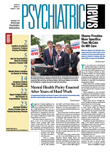The Food and Drug Administration (FDA) began to post a list of medications in September to inform the public about drugs and medical devices under investigation for potential but unproven serious safety risks.
The list of “potential signals of serious risks/new safety information identified by the Adverse Event Reporting System (AERS)” is posted on the FDA's Web site and presents a table of medication or medical device names and their suspected safety risks or adverse effects. The list will be updated on a quarterly basis.
The current list contains 20 medications and events identified in the first quarter of 2008. Included are duloxetine for potential urinary-retention problems and quetiapine for suspected “overdose due to a sample pack labeling confusion.” No details of these risks are given in the table.
The list has been set up for public access as a result of a provision in the Food and Drug Administration Amendments Act of 2007, which directed the FDA to conduct “regular, biweekly screening of the [AERS] database and post a quarterly report on the Web site of any new safety information or potential signals of risk.” The AERS database houses millions of adverse events reported to the FDA by health care professionals, patients, consumers, and pharmaceutical and device companies.
Adverse events can be any untoward medical event reported by a patient or a health care professional spontaneously or by a drug company conducting clinical trials. Adverse events may range from an allergic reaction to falling down the stairs after the patient receives treatment with a drug or medical device. In real-life settings, it is often difficult to establish a causal relationship between a drug and an adverse event, because the individual may be taking other medications or have other possibly contributing factors.
The FDA said its drug-safety analysts routinely review the reports in the AERS database and identify the drugs or devices and suspected adverse events that warrant investigation and posting on the Web site, “normally based upon groups of AERS reports.”
The FDA stated in a September 5 announcement that “the appearance of a drug on this list does not mean that FDA has concluded that the drug has this listed risk,” but rather that a potential safety risk has been identified and is being evaluated by the agency. The agency staff may conclude, after a detailed review and/or collection of additional information, that the drug is indeed associated with the suspected serious safety risk—or not.
Although this list tells the public, including physicians and consumers, about ongoing safety reviews the FDA is conducting, it is not clear how the lay public will respond to the postings. The agency emphasizes that listing a medication on the Web site “does not mean that FDA is suggesting prescribers should not prescribe the drug or that patients taking the drug should stop [taking it].” The FDA advises patients to contact their health care providers if they have questions about any medication on the list. Health care providers, meanwhile, may decide to monitor for the suspected adverse events more carefully in patients taking the identified medications.
The FDA list is posted at<www.fda.gov/cder/aers/potential_signals/potential_signals_2008Q1.htm>. The announcement that the list is available is posted at<www.fda.gov/cder/aers/potential_signals/default.htm>.▪
